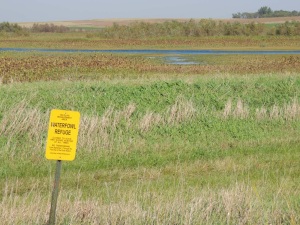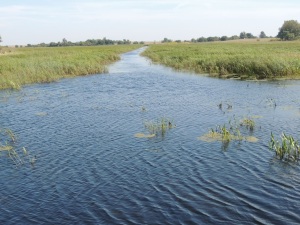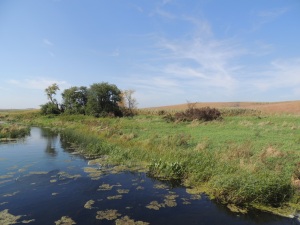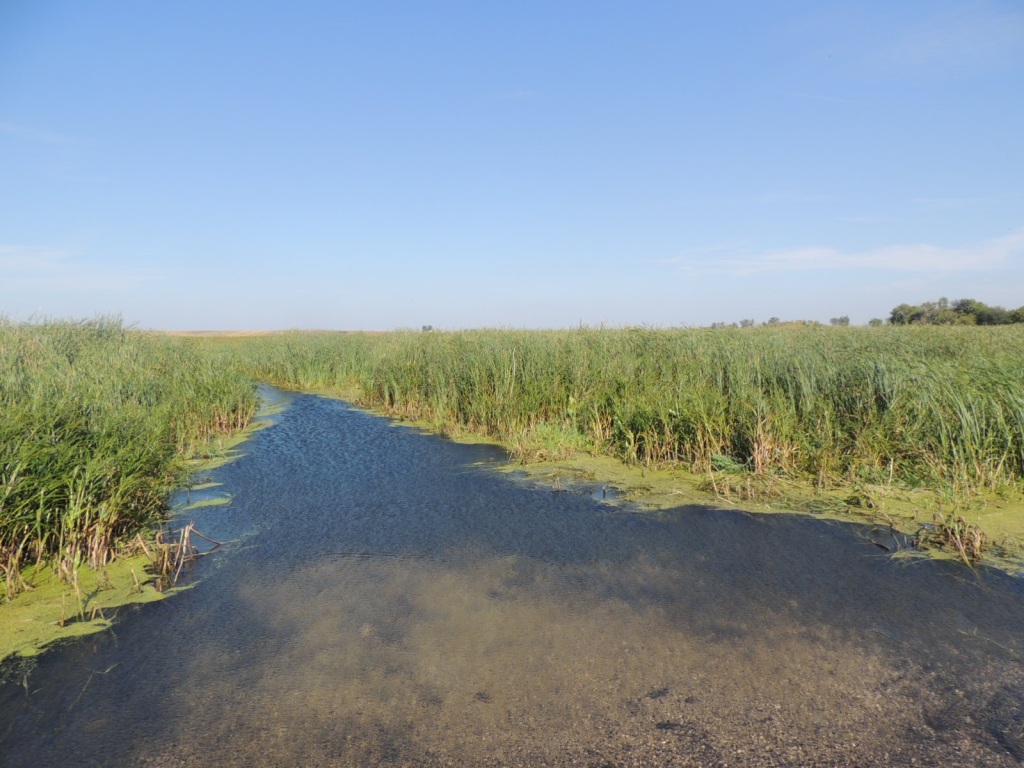Bill to give “National Wildlife Refuge” status to long-time Greene County recreation area

Tom Harkin, Iowa’s prestigious five-term Senator, retires at the end of this US Congress after 40 years in federal office. Known for championing the American with Disabilities Act, and for heading the powerful Senate Agriculture Committee, the Senator is also an avid conservationist and a hunter.
On Sept. 18, as a parting gesture of support to Iowa outdoor enthusiasts, Senator Harkin introduced into the US Senate Bill 2845, the “Southern Prairie Potholes National Wildlife Refuge Act.” This bill would give enhanced federal status to the Dunbar Slough wetland-grassland complex located along the Willow Creek tributary of the Middle Raccoon River, upriver from Des Moines.

“The Greene Country conservation board and our local hunting partners are excited to get this attention for our county,” said Dan Towers, Greene County conservation director. “For the last 30 years we have been working together with state and federal partners to gradually expand wetlands and grasslands in the Dunbar Slough area. This bill is good recognition for our efforts, and another step forward in maintaining quality local habitat and hunting.”
Decades ago, the Prairie Pothole Joint Venture (PPJV) designated 23,500 acres along Willow Creek as a “PPJV priority area” for restoration and preservation because of its importance to wildlife. This PPJV designation has permitted gradual public land acquisition for habitat restoration and public hunting.
Today, the Dunbar Slough-Willow Creek wetland complex totals more than 2,134 acres of federal, state, and county lands, managed by the Iowa DNR and Greene County as popular public wildlife and hunting areas.
National Wildlife Refuge status: In 2011, Governor Branstad proposed to the US Secretary of Interior, that Dunbar Slough be gradually expanded and given the status of National Wildlife Refuge. This is because its location at the edge of the last glacial incursion northwest of Des Moines makes it prime habitat for migrating waterfowl and game birds. This Greene County-centered “Southern Prairie Potholes” project was accepted for inclusion in the nationwide America’s Great Outdoor (AGO) Program, and attracted the support of Pheasants Forever, Ducks Unlimited, Iowa Natural Heritage Foundation, Iowa Audubon, Whiterock Conservancy, and others.
Despite AGO status, progress has been slow due to limited federal dollars. The Department of Agriculture came into Greene County in 2012 with some Wetland Reserve Enhancement dollars, but the US Fish and Wildlife Service (USFWS), with a limited presence in Iowa, was slow to move ahead.

Senator Harkin is now targeting federal conservational resources specifically to this west-central Iowa wetland/grassland area. The legislation instructs the US Fish and Wildlife Service, working together with the Iowa DNR and other public and private partners, to increase Dunbar Slough’s status to a National Wildlife Refuge. Says Towers, “The proposed new status, focused specifically on the Willow Creek watershed, should help step up the pace of voluntary acquisition and restoration projects to enhance local public hunting acres and habitat.”
“Greene County is getting this attention due to our location. Most Iowa wetlands are far to our north. Dunbar Slough, being west central, serves as a critical stopping point along N-S flyways,“ Towers said.
The USFWS currently maintains 561 National Wildlife Refuges, many open to public hunting. These can be huge multistate area such as the Northern Tallgrass National Wildlife Refuge already covering much of Minnesota and Iowa. There are also geographic-specific refuges such as Iowa’s Neal Smith National Prairie Refuge, created when a huge land parcel came up for sale all at once.
Increasingly, however, national wildlife refuges follow a mosaic pattern with a core of publicly-held lands surrounded by privately held lands with varying degrees of voluntary conservation practices. The public core grows slowly; additional purchases occur only as acquisition dollars become available, and matched with willing sellers. Meanwhile, private land owners within the refuge are unaffected, except for having better access to different conservation incentives. This is the model applicable to Dunbar Slough.
Says Towers, “The main advantage of refuge status is that it will help attract acquisition dollars targeted on the gradual expansion of Dunbar Slough wetland-grassland complex. With high land prices, this is a slow process. But over time we should be able to add a few more tracts and expand public hunting acres.
“Expanded resources for Dunbar is also good news for other kinds of wildlife. Dunbar Slough has the endangered Blanding’s turtle. Birdwatchers love coming out for the spring and fall migrations. We even had a wild-nesting pair of Trumpeter swans this year, with six cygnets.”
“Another cool thing, that the kids really like, is our gushing artesian wells. Those are such a clear marker that you have entered the Prairie Pothole region.”
For more information contact Dan Towers, Greene County conservation director, conservation@co.greene.ia.us, cell 515-370-1204 ~by Chuck Correll

